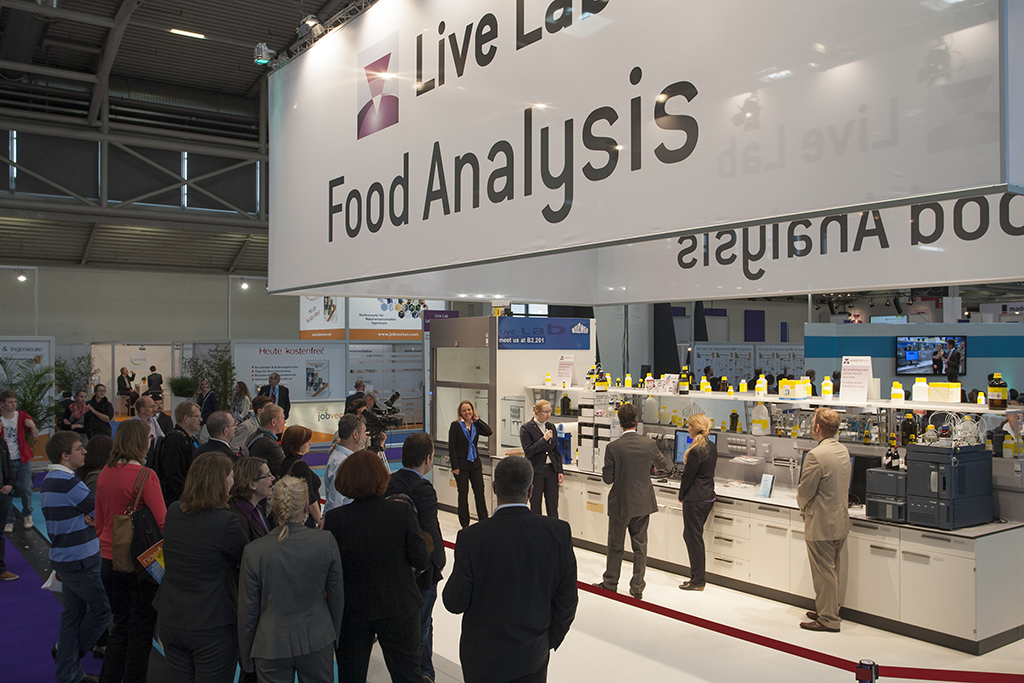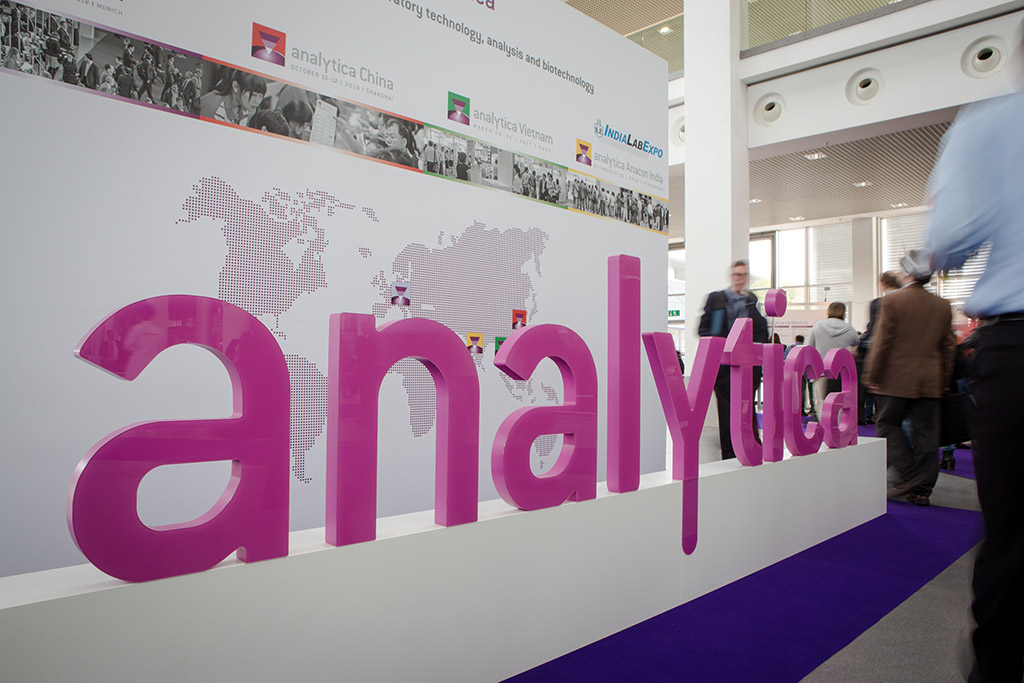Trend report: Food analysis
Origin analysis has never been more important than it is now. The authenticity of food is a key factor in consumers' purchasing decisions. Highly efficient analysis systems and future-oriented detection techniques for testing origin and authenticity are on display at analytica 2016 in Munich. Origin analysis has never been more important than it is now. The authenticity of food is a key factor in consumers' purchasing decisions. That applies to organic eggs, vegetables and fruit, special types of honey, regional meet products, fish from certain fishing areas, and winefrom various wine-growing areasas well as to vegan, vegetarian or gluten-and lactose-free products. In the interest of consumer protection and to avoid food scandals, manufacturers must be able to clearly verify that the information on their labels is correct. Highly efficient analysis systems and future-oriented detection techniques for testing origin and authenticity such as those on display at analytica 2016 in Munich have become indispensible. Due to its complex diversity, all food cannot be analyzed by government inspection agencies before it goes to market. But the information on the label still has to correspond to the actual ingredients and additives. There cannot be any risk of endangering consumers'health. Things used on a daily basis such as materials that come into contact with food must also be produced to ensure that they do not pose a health risk. And cosmetics may not contain substances that might irritate the skin or lead to other health hazards. Confusing and incorrect information about certain effects are prohibited, as areillegal dyes, additives and softening agents. Consumer protection When it comes to protecting consumers' health, monitoring is a key aspect of the government food inspection program. In Germany, the systematic measuring and monitoring program that the national and state governments have had in place since 1995 is carried out as an independent legal mandate by government food-inspection agencies. Since 2010, not just food, but cosmetic products and consumer goods that are common in Germany are also tested for unhealthy substances or microorganisms. The results of the monitoring program serve as a basis for health-risk evaluations and are very important when developing national and European legislation. Pesticides, herbicides, insecticidesand other residues in food Companies that manufacture, process and sellfood and cosmeticsare required to conduct their own tests to document and guarantee the quality of theirproducts and the raw materials that they use. Government food-inspection agencies conduct random risk-oriented tests to ensure compliance with legal guidelinesand protect consumersfrom potential health risks. Similar monitoring procedures are used to ensure compliance with applicable maximum residue levels of pesticides, mycotoxins and microorganisms as well as veterinary drugs, heavy metals and dioxins. In the case of pesticides alone, more than 1,000 different active substances are used around the world. In pesticide analysis, multiple-component methods are needed, especially in the case of non-target screening for emerging contaminants. In LC/MS coupling, using microplasmas as an alternative to electrospray ionization is opening up new detection potential. In the eye of the general public and the scientific community, the most significant active ingredient in herbicides, glyphosate, is still the object of fierce criticism because of its health risks and plant resistance. A good way to broaden the detection spectrum of pesticide residues, for examplein chicken eggs, would be to use databases to conduct comparisons. The European reference laboratory EURL AO ran comparisons of 136 honeys of different origin using LC/MS/MSto test for residues of 128 different pesticides, and pesticides were detected in 53 percent of the samples. However, database research alone is not sufficient for reliable results. Detecting genetically modified organisms (GMOs) The use of gene technology in agriculture, or green gene technology, is one of the most rapidly growing, albeit one of the most controversial technologies of the past 20 years. Above all, its growing international significance is noticeable because of the constant increases in acreage being used to plant genetically modified plants such as corn, cotton, rape and soya beans in North America, South America and Asia. Unauthorized GM plants may not be brought to market in the EU, which has a zerotolerance policy on this issue. Right now, 67 events are authorizedfor import intothe EU. Another 50 events have applied for authorization in the EU. If a food contains a GM product, it must be clearly labeled if it accounts for a more than 0.9 percent share of the ingredient in question or if adding the substance was unavoidable technically. However, food products of animal origin such as milk, eggs and meat are not subject to mandatory labeling. A variety of different PCR technologies are used to test for genetically modified ingredients, from polymerasechain reaction and quantitative real-time PCR (qPCR) or digital droplet PCR (ddPCR) to MLPAscreening, aPCR-based detectionmethod, and NGS methods. Mycotoxins Climate change and increasing global temperatures are beginning to affect food safety. In the agricultural sector, this is particularly noticeable in the form of crop losses and lower grain harvests. Extreme quantities of rain and dry periods are leading to increased instances of pest and mold infestations. In many cases, it is not only plant pathogens, but also toxic metabolites that have formed that pose the actual risk potential. The number of foods that are contaminated with mycotoxins is rapidly increasing, particularly due to the improved detection range of modern analysis systems. At the global level, a significant risk to health and the economy is expected due to mycotoxinssuch as carcinogenic aflatoxins. Given this situation, developing efficient analysis methods that are able to identify previouslyunknown metabolitesand toxinsis more importantthan ever. Mass spectrometry techniques such as LC/MS/MScouplings replaced DC and ELISA a long time ago and continue to increase in significance as a basis for metabolomics technologies. Today it is already possible to identify bacterial and fungal metabolites including regulated mycotoxins. Rapid and new types of techniques for identifying mycotoxins in human blood are also being developed to determine how bad the contamination is. The mycotoxin findings in grain and grain-based foods and feedstuff can also include so-called masked mycotoxins in which corresponding toxins are metabolized by the plant itself. Harvest products such as corn, rape, soy, vegetables, nuts, coffee beans or tea plants and foods that are made with them are frequently contaminated with mycotoxins. Highly selective detection techniques make specific detection capabilities possible. An automated online SPE-HPLC process even makes it possible to identify the mycotoxin zearalenone in cooking oils. Flavorings and functional ingredients Secondary plant compounds and metabolites such as polyphenolsor natural substances definitely have health benefits. Minimizing the risk of cardio-vascular disease or lowering blood pressure as well as anticarcinogenic and antigenotoxic properties are just some of the positive characteristics that are attributed to polyphenols. However, the most important factor is their potential to catch radicals as an antioxidant. The phenolic content of a cocoa product or chocolate depends on several factors as well as the processes of fermentation and roasting. Monomers,flavonolsand higher polymeric procyanidinscan vary strongly depending on their sort, origin and processing technique. Roasting the cocoa beans may reduce the polyphenol content, but in addition to the typical brown color, the characteristic cocoa aroma develops as various components are produced by the so-called Maillardreaction. During the roasting process, reducing carbohydrates react with amino compounds. The final products created when heat is applied and the melanoidins of other reaction examples not only affect quality and taste, they also display antioxidant and antimicrobial characteristics. Natural polyphenols can be found in a wide range of plant-based foods as well as fruit juices and even in red wine. Due to their antioxidant properties, polyphenols have a positive influence on health. Personalized nutrition As nutritional awareness increases in society, demand for "healthy" foods also goes up. Smoothies made of fruits and vegetables are not the only trend. Functional foods, pre-and probiotics and neutraceuticals are more popular than ever. Food products are being enhanced with vitamins and minerals, bacterial cultures and active ingredients that promote improved health. In this regard, the objective of EUGuideline 2004/24/EG is to protect consumers from potentially dangerous side effects due to these types of foods and over-the-counter plant-based medications. Secondary plant-based substances and functional ingredients are now being used in specific nutritional models in top competitive sports and in patients with allergies as well as certain cancer and metabolic diseases or to prevent arteriosclerosis. Widespread allergies and oversensitivity to food products is increasing. In this respect, growing health awareness is increasing demand for specifically designed dietary foods. Gluten-free foods in the case of celiac diseases, which aretriggered by the grain protein gluten, increase the need for optimized detection methods such as the immunochemical ELISA kits at the same time that they have analysts facing new challenges. The market for lactose-free products is also growing very quickly, and regulations within the EU are becoming stricter. For foods labeled "lactose free", the lactose value was lowered from 100mg to 10mg per 100 gof product. That makes sensitive chromatographyanalysis methods such as HPAEC-PAD necessary. It is a simple way to reach the required detection limit and guarantee the quality control of this food.
When it comes to explaining explosive foodfraud and deception in the food industry such as natural and artificial vanilla flavorings, for example, high-resolution detection methods are just as necessary as specific molecular biology testing systems. Even nanoparticles, which are used in the food industry as carriers for active substances or in coffee whitener and chocolate icing, still need to be examined because they can have unknown negative effects on human health. Particularly when it comes to personalized medicine, the aspect of automation is increasing in significance. As automation increases, data collection and sensible archiving of gigantic quantities of data represent a complicated challenge. Industry statements According to Jennifer Raue from the Marketing Department at Shimadzu, highly sensitive identificationand quantification of allergenic ingredients in processed foods via specific peptides using LC/MS/MS as well as metabolic profiling to test the authenticity of natural ingredients will be even more important in the future. For her, however, identifying PAH in foods usingGC triple quadupole mass spectrometry is still an important applicationfield. "Simplifying and standardizing sample-preparation steps for rapid, sensitive identification using LC/MS/MS increases efficiency in the laboratory considerably," explains Raue. More information about the industry's latest trends and of the food laboratory of the future is presente at analytica 2016 www.analytica.de Source: analytica/Messe München
11.05.2016 | Autor
Kaido Einama
-> Drucken
|
MEHR ZU DIESEM THEMA
TOP ARTIKEL
TOP AKTUELLsoeben aufgeschaltet
MEIST GELESEN
|
||||||||||||||||||||||||||||||||
|
|
|||||||||||||||||||||||||||||||||
|
|
|||||||||||||||||||||||||||||||||






